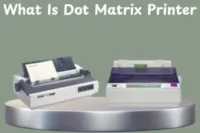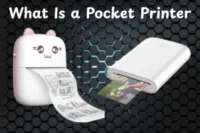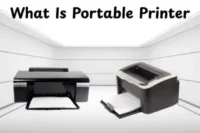What Is Daisy Wheel Printer? Simple Guide for Beginners
Published: 17 Oct 2025
Ever heard of a daisy wheel printer and thought it sounded like something from a garden instead of a computer? You are not the only one! Many people now identify it with old typewriters and early dot matrix printers, or even an LED printer. Don’t worry, this guide will make everything clear. We’ll explore what a daisy wheel printer is, how it works, what it’s used for, the benefits and drawbacks, and why it still has a particular position in printing history.
What Is a Daisy Wheel Printer?
A daisy wheel printer is a classic printer that prints text using a wheel with letters and symbols on its edges. The wheel turns to the right character, and a little hammer pushes it through an ink ribbon onto the paper. This produces clear, pointed letters, similar to a typewriter. It was commonly used in offices to print papers and letters. While it prints slowly and generates noise, it was formerly known for its high print accuracy and reliability.
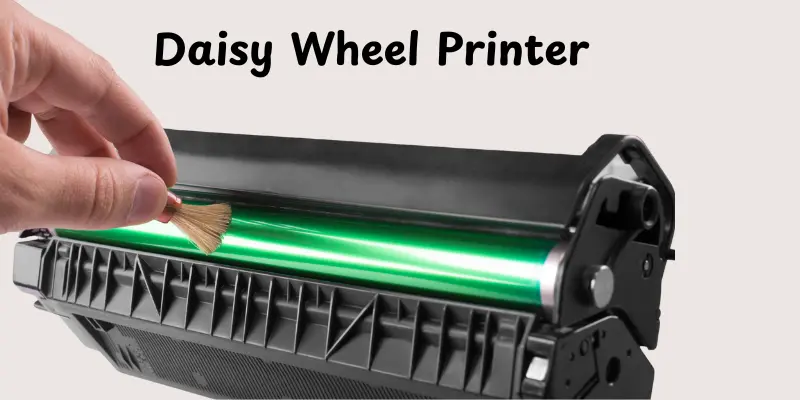
History of Daisy Wheel Printers
The daisy wheel printer was developed in the early 1970s as an upgrade to typewriters and early dot matrix printers. It was first introduced by Diablo Systems, which was ultimately acquired by Xerox. These printers became popular in offices in the years between the 1970s and 1980s because they produced clear, professional-looking text. However, when faster and quieter printers such as inkjet and laser types became available, daisy wheel printers went away. but they remain an important step in the history of printing technology.
How a Daisy Wheel Printer Works
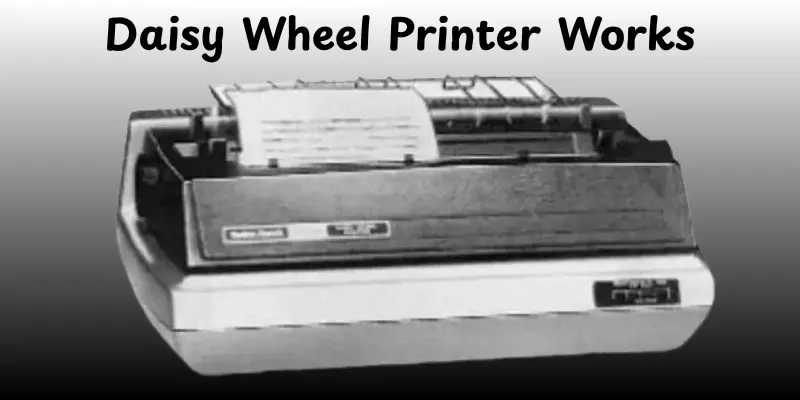
A daisy wheel printer works similarly to a typewriter. It prints one letter at a time with a wheel having characters on its petals. This process is lengthy, but it results in clear, sharp writing. Here’s how it works, step by step:
- The printer receives the text from the computer or device.
- The daisy wheel spins to position the correct character in front of the ink ribbon.
- A small hammer strikes the back of that character, pressing it onto the ink ribbon.
- The ribbon transfers ink to the paper, leaving a printed letter or symbol.
- The print head then moves one space to the right to print the next character.
- This process continues line by line until the document is complete.
Key Parts of a Daisy Wheel Printer
A daisy wheel printer is made up of several important parts that work together to print clear, sharp letters. Each part has a specific role in the printing process. Here are the key components:
- Daisy Wheel:A circular disk with characters on each petal. It depends on where to place the correct letter for printing.
- Print Hammer: Strikes the selected character on the daisy wheel to press it against the ink ribbon and paper.
- Ribbon: A thin ink-coated strip that transfers ink to the paper when struck by the print hammer.
- Motor Assembly: Controls the spinning of the daisy wheel and the movement of the print head across the paper.
- Paper Feed Mechanism: Moves the paper up after each line is printed, ensuring text is aligned properly.
Types of Daisy Wheel Printers
There are a few types of daisy wheel printers, each designed to right different printing needs. But they all work on the same basic principle, their design and movement vary slightly. Here are the main types explained simply:
- Electronic Daisy Wheel Printer – Works with electronic signals to control the wheel and hammer for faster and smoother printing.
- Manual Daisy Wheel Printer – Operated by hand or mechanical force, used mostly in older machines for basic printing tasks.
- Motorized Daisy Wheel Printer – Uses an electric motor to rotate the wheel and move the print head automatically for consistent printing.
Applications of Daisy Wheel Printer
Daisy wheel printers were initially famous for their clear, sharp text output. They remain recognized for their roles in offices and documentation work. Let’s see where these printers were most commonly used:
- Official Documents: Used for printing formal letters, reports, and contracts with neat text.
- Typewriting Replacement: Served as an advanced version of electric typewriters for clean printing.
- Legal and Government Offices: Ideal for producing professional documents and records.
- Business Invoices: Helped print receipts and invoices with crisp, readable text.
- Academic Reports: Used in schools and universities for thesis and paper submissions.
- Mail Merging: Commonly used for bulk letter printing with personalized details.
Advantages and Disadvantages of Daisy Wheel Printer
In this section, we will look at the pros and cons of using a daisy wheel printer. Understanding both sides helps you know where it fits best and when it’s not the right choice.
| Advantages of Daisy Wheel Printer |
|---|
|
| Disadvantages of Daisy Wheel Printer |
|---|
|
Tips for Choosing a Daisy Wheel Printer
Before purchasing a Daisy Wheel printer, it’s important to know what to look for. These printers have become more common, but several models are still used for specialized office or archival purposes. Here are some fast and easy guidelines to help you make good choices:
- Check availability: Make sure replacement parts like ribbons and wheels are still sold.
- Look for print quality: Choose a model that produces clear, crisp characters.
- Consider noise level: Daisy Wheel printers can be loud, so check if it fits your workspace.
- Speed matters: Pick a printer with decent speed if you print many pages regularly.
- Budget for maintenance: Ensure the printer is affordable to maintain and easy to repair.
- Paper handling: Look for smooth paper feeding to avoid jams or uneven prints.
Conclusion
So, in this article, we’ve explored the Daisy Wheel Printer in full, from its workings and parts to its types, benefits, and applications. It’s a great option for clear, professional text printing without unnecessary graphics. If you enjoy learning about how historical machinery affected modern printing, this is one to know. Keep studying, and continue to watch for more technical tips like this!
FAQs
They are not commonly used today. Modern printers like inkjet and laser printers have replaced them because they are faster and more flexible. Daisy wheel printers are now mostly seen in museums or among collectors who like old machines.
A daisy wheel printer is sometimes called a letter-quality printer. This name comes from the fact that it produces very clear and sharp letters, just like a typewriter.
They create high-quality, crisp text that looks professional. They are also strong and dependable for long-term use. They also have basic mechanical parts that make them easy to repair.
It is mainly used for printing letters, reports, and other text documents. It’s ideal for tasks where clean, readable text is important.
The daisy wheel printer was invented by David S. Lee in the early 1970s. He developed it while working at Diablo Systems, which later became part of Xerox.
A daisy wheel printer creates complete letters using a wheel, but a dot matrix printer prints letters with small dots. The daisy wheel produces more accurate text, while the dot matrix can print graphics more quickly.
Not really. Most offices and homes have switched to modern printers. Daisy wheel printers are mostly seen as collector’s items or used for teaching purposes.

- Be Respectful
- Stay Relevant
- Stay Positive
- True Feedback
- Encourage Discussion
- Avoid Spamming
- No Fake News
- Don't Copy-Paste
- No Personal Attacks

- Be Respectful
- Stay Relevant
- Stay Positive
- True Feedback
- Encourage Discussion
- Avoid Spamming
- No Fake News
- Don't Copy-Paste
- No Personal Attacks


